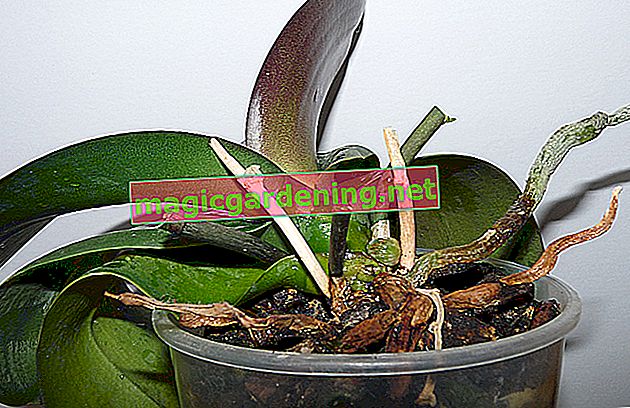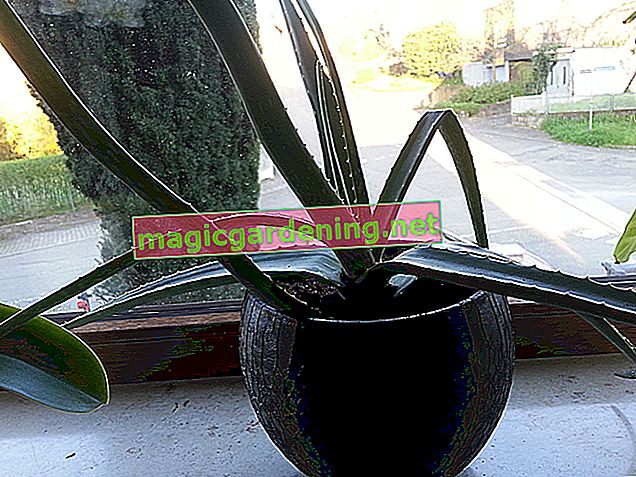
All symptoms at a glance
Before you start countermeasures, please use the following symptoms to check whether the white film is actually mealybugs:
- In the early infestation stage, there are numerous, tiny cotton balls on the leaves and bulbs
- In the further course, the padded bumps combine to form white, greasy webs
- The mealybugs underneath suck out the sap so that the leaves wither and the shoots cripple
also read
- This is the message an orchid conveys - its meaning in flower language
- Your orchid isn't blooming? - How to make the diva bloom again
- How to properly care for your mini orchid
At the end the orchid is completely covered with the white webs that serve as waxy protective armor for the pests.
Fighting mealybugs effectively - this is how it works in harmony with nature
Orchids are usually sensitive to the concentrated load of chemical insecticides. This is especially true for thin-leaved species and varieties. In practice, on the other hand, the following ecological means have proven to be effective in gently removing the white coating from the plants:
- Immediately isolate the affected orchid from other indoor plants
- Treat the plant in the quarantine room with a solution of 1 liter of water, 10 ml of alcohol and 15 ml of soft soap
- Alternatively, add 2 tablespoons of olive oil to 1 liter of water and 1 drop of washing-up liquid as an emulsifier
As a precaution, please do not spray the solution on the orchid. Rather, apply the agent to all infected parts of the plant with a fine brush. The alcohol dissolves the waxy armor and is quite aggressive. The pesticide based on olive oil should therefore be used on orchids with very thin leaves.
Tips
In most cases, mealybugs are introduced into the collection with a newly acquired orchid. Even experienced and highly competent specialist dealers are protected from the pests. Therefore, when buying an orchid, take a close look at the plant. Don't be afraid to examine the plant with a magnifying glass. Once the scale insects are in the house, you will often not get rid of the plague for years.








